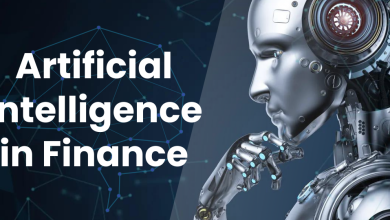
Most customer experience strategies are built against yesterday’s problems. Teams run post-mortems, dig through quarterly analytics, and patch friction points after customers have already churned or complained.
That reactive model might have worked when customer expectations moved slowly. But today, digital journeys span dozens of channels, and customer patience is at an all-time low. Nearly 1 in 2 sessions end in bounce, and traditional analytics don’t surface friction points until it’s already impacted revenue. Delayed fixes leave customers frustrated and money on the table for brands.
But AI is changing the game. Instead of measuring what went wrong, organizations can now anticipate where things will go wrong – and automatically trigger the fix before unwanted impact takes hold. It’s not just a better way to manage experience; it’s a new strategic operating model entirely.
From Reactive to Predictive: The New Strategic Mandate
The most profound shift AI brings to customer experience is the ability to go from reactive optimization to predictive orchestration.
Instead of waiting for conversion rates to dip or support tickets to spike, machine learning models analyze behavioral signals in real time, like scroll patterns, clicks, hesitation points, and more to detect friction before it impacts revenue. Natural language processing extracts emotion from customer chats and reviews to surface brewing sentiment. Predictive analytics identify at-risk segments before churn becomes a boardroom problem.
Experience leaders can now adjust plans proactively like allocating support ahead of product launches, tweaking conversion funnels in flight, or refining onboarding based on predicted pain points. Digitally disciplined teams – brands that proactively test and refine their experiences – are already seeing the payoff: 22% less load-time frustration and 4.5x more friction reduction. It’s not just a smarter model. It’s a measurable advantage. The organizations that act in real time will outperform those still stuck in the rearview mirror.
Enter Agentic AI: Experience Strategy That Executes Itself
We’ve now entered the era of agentic AI, where systems that don’t just suggest optimizations, but act on them autonomously.
Unlike traditional chatbots that react to inputs, agentic AI monitors full customer journeys and makes real-time decisions. It can detect when users are stuck on a checkout page, dynamically simplify the layout, and test alternative flows – all without waiting for a human to intervene. But when it’s necessary for human intervention, it does so seamlessly by offering next-best-action recommendations, and both high level summaries of customer journeys and details drill-downs into exact errors.
Some retail brands are already deploying AI systems that automatically adjust product recommendations in real-time based on user behavior, increasing relevance and conversion with no manual effort. Airlines are using it to proactively reroute customers affected by delays and notify them before they even ask for help.
Even more powerful: these systems operate across channels, not in silos. If friction appears in a mobile flow, agentic AI can adjust support chat prompts or prep call center agents with context. As a result, experience teams shift from fixers to orchestrators and set strategic goals while AI handles the micro-adjustments needed to meet them.
Conversation Intelligence: The Untapped Strategic Layer
Gartner forecasts that by 2028, 70% of customer interactions will begin and end within conversational, third-party assistants. As customer interactions increasingly shift toward chat interfaces, AI agents, and voice assistants, conversation intelligence is becoming essential to understanding the full customer journey. It’s the new(est) frontier of customer intelligence.
Newer platforms purpose-built for analyzing conversations now use a combination of proprietary and large language models to detect sentiment, intent, and engagement quality at scale. These tools go beyond simple keyword tagging or ticket classification, and help surface the why behind customer frustration, loyalty, or churn risk.
For example, if dozens of users are reaching out with the same unspoken frustration, like a confusing onboarding experience or a delay in order status updates, conversation intelligence platforms can flag those patterns early. When linked with broader behavioral analytics across digital channels, this insight becomes a powerful tool for both reactive fixes and proactive strategy.
By capturing the most unfiltered and direct form of customer feedback – including the words and tone customers use in real-time support interactions – businesses are able to gain a new layer of customer understanding. CX, product, and support teams can identify systemic friction points, forecast spikes in support demand, and adjust roadmaps or content strategies accordingly.
Just as traditional digital analytics showed what users clicked, conversation intelligence reveals what they’re saying (and feeling) in the moment. The companies that can connect those signals across channels will be best positioned to design experiences that feel both intelligent and intuitive.
The Real Barrier: Strategy, Not Technology
Despite the hype, many companies stall on AI adoption, not because of technical limits, but because their teams aren’t structured to use it strategically. AI cannot be done for AI sake, but for the benefit of both employees and customers.
Traditional CX teams often lack deep analytics expertise. Meanwhile, data teams aren’t fluent in customer journey design. The solution is cross-functional: hybrid pods of behavioral analysts, data scientists, AI specialists, and CX strategists.
Leverage AI to fix a specific problem, understand the ROI behind it, and then expand from there.
Lead the Change, Don’t Chase It
In a world where attention spans are shrinking and acquisition costs are climbing, customer experience is a key differentiator, but only for those who treat AI as the core engine of their strategy and not as a bolt-on tool.
The winners will be the brands that move from reactive fixes to predictive orchestration, from siloed teams to intelligent systems, and from static journeys to dynamic experiences tailored in real time.




